Ian Thorpe Part 2 – 20 Years Since Thorpedo Fired Off The 1st Of 3 World Records In As Many Days (Video)
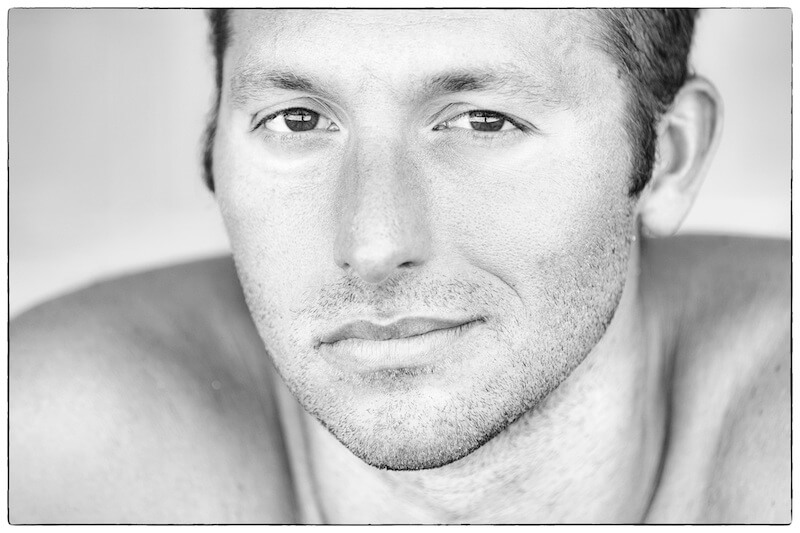
Ian Thorpe – The Thorpedo Gathers Pace
In the second part of three features celebrating the career of the legendary Australian freestyler, we consider the first of three World records set in as many days at Olympic trials leading into the Sydney 2000 Olympic Games, why home expectations were high, what happened next and how those pace-setting moments at the heart of the pantheon of a pioneer served as a magnet to other legends of the pool.
******************************
A couple of months after his 17th birthday, Ian Thorpe was getting ready to race at the New South Wales Swimming Championships in the summer of 1999-2000 when he received a personal call from the acting Prime Minister of Australia, John Anderson. The chat probably went something like “G’Day Thorpey, not to mention good on ya: you’ve just been voted outstanding ‘Young Australian of the Year’.”
The honour came fast on the heels of the “Young Australian Sports Award” for a teenager putting pantheon planners on constant notice.
Since he celebrated his senior debut at 14 with a silver medal at the Pan Pacific Championships in 1997 on the way to becoming the youngest male World Champion in swimming history with victory over 400m freestyle at Perth 1998, “Thorpey” had amassed trophies for ‘Sport Australia Male Athlete of the Year’, ‘Sports Personality of the Year’, ‘World Swimmer of the Year’ and ‘Australian Swimmer of the Year’. He had also received an award as “the athlete who most inspires the nation”, the ‘People’s Choice Australian of the Year’ another plaudit heaped on his young head.
Thank heavens he had broad shoulders.
By the time Thorpe rose on his blocks in a full Adidas textile bodysuit that extended to his ankles and wrists this day at Olympic trials in 2000, already a household name fast claiming the term Thunder from Down Under for swimming, he had gone beyond boy with big feet, monster kick and promise of the kind that arrives on a surf of tidal dimensions once every many generations.
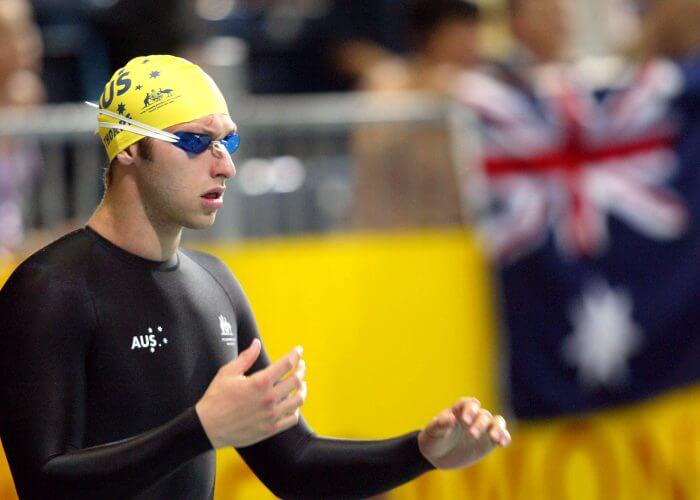
Ian Thorpe – Photo Courtesy: Adidas
At 16 the previous August, he had stunned the world of swimming with a global standard of 3:41.83 over 400m freestyle at his second Pan Pacs in the very same Sydney Olympics pool. It was a pivotal moment on several levels, among them his age, his composure, his potential and his pulverising of what had gone before.
It was one thing to flick back to the days of Murray Rose and John Konrads and marvel at world standards being sliced back by two seconds a pop but quite another to hear of such plunder a year out from a home Sydney 2000 Olympics, Kieren Perkins on the comeback trail and Australia crawling with an embarrassment of freestyle riches, Grant Hackett the other teen riding a giant wave.
Perkins had held the 400m world mark at 3:43.80 since a sizzling day at the Foro Italico’s Stadio Olympic del Nuoto in Rome, the global crown his, the 1500m title waiting for no other hand to touch the wall first a few weeks after the Olympic champion had crunched the 1500m high bar back to 14:41.66.
Now, Thorpe, just 16 and coached by Doug Frost, had gone 3:41.83 over eight lengths. Swimming jaws dropped open in every pool in the world where it was understood: the 400m no longer belonged to a 400-1500m man but a 200-400m man. On the clock, that has remained the case ever since The Thorpedo made it so in 1998.
Australian Olympic Trials – May 13, 2000 (this day in Australia 20 years ago)
400m freestyle: Thorpe appeared not to flinch, his flow to a world record of 3:41.33 a furious mix of power, efficiency and destiny not to be denied. Nothing, neither the splendid new venue and its crowd of 10,000 rafter-raisers nor any rival win the planet could stand in his way, it seemed.
Over the first 100m, Hackett, on 53.32, stuck with Thorpe, on 53.15. From there, it was all over. By half-way, Thorpe was almost 2sec ahead of his own pioneering pace, on 1:49.14, Hackett to body lengths back and struggling to stay in contention. Two other would-be rivals, Perkins and Daniel Kowalski, both Olympic medallists over 400m, having decided to avoid a scrap they could only lose and concentrate their efforts on the 1500m.
Wise. As Thorpe’s feet touched the half-way wall, the knowledgeable crowd knew what the difference between 1:51.03 and 1:49.14 could add up to by the end.
With 100m to go, Thorpe was racing only himself and the clock, which at 3:41.33 by close of play was a new high that left Hackett’s 3:51.05 looking decidedly worldly, all the more so because Thorpe had made a towering effort look so effortless.
Thorpe would take down the 200m free World standard twice in the coming 48 hours, for three global records in as many days, the four-length challenge the subject of our third part of this mini-series celebrating the Australian’s achievements on the 20th anniversary of his first Olympic selection.
Thorpe never gave the impression of struggling In the media scrum and often said all the right things, sometimes sounding more genuine, sometimes more coached but always apparently in command and control. After the fourth World mark of his career and second 400m standard, Thorpe said:
“I was pretty surprised about the result tonight. My aim wasn’t to break the world record; it was to make the Olympic team. I was just praying to be able to get through. No one is guaranteed a place on this exclusive team.”
He also did what he would often do again: thanked the crowd and left room for improvement: “The crowd is amazing; they brought me home in the last 50. It wasn’t the best race tactically, but I qualified.”
Hackett was less enamoured: “Pathetic is what it was. I don’t know what happened. I trained for a 3:40 and couldn’t even do a 3:50. I’ll come back. I’ve got faith in myself and my ability. I’ll turn it around.”
What Happened Next
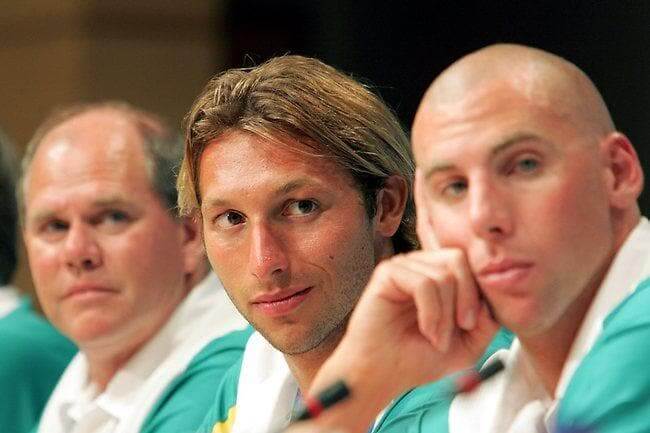
Head Australia coach Leigh Nugent, Ian Thorpe and Grant Hackett – Photo Courtesy: Swimming Australia
It was said that Thorpe would also step up to the 1500m at some stage. He never did as a winner but he did go down as the first man to win the 200, 400 and 800m world crowns. At Fukuoka in 2001, the Thorpe Vs Hackett rivalry was theatrical, magnificent, dazzling.
Thorpe set world records in all three triumphs, 1:44.06 in the 200m in a trouncing of the Olympic champion who had stolen his thunder Down Under a year before, Pieter van den Hoogenband, on 1:45.81, 3:40.17 over 400m ahead of Hackett’s 3:42.51 and the first sub 7:40 800m, a 7:39.16 ahead of Hackett’s 7:40.34. Hackett, too, was in the form of his life, a 14:34.56 global mark over 1500m taking a golden hammer to Perkin’s 14:41 of 1994.
That day at Olympic trials marked the second of Thorpe’s five world marks over 400m. He would go on to claim the Sydney 2000 title in what felt like an other-worldly 3:40.59, not that he was not done there. Beyond Fukuoka 2001, the Australian arrived in Manchester for the Commonwealth Games in 2002 intent on the record goals he’d set himself.
Six golds later, one stood out: 3:40.08sec, a ripple away from taking the pace below 3:40 20 years after Vladimir Salnikov had taken it below 3:50.
I wrote at the time: “Either Thorpe will crack the mark or it will be another 20 years before we see it fall.”
In a sense, that is what has happened. Thorpe made his bodysuit iconic. It wasn’t shiny, it was textile and the swimmer was still in charge. Very much so with Thorpe, the swimmer.
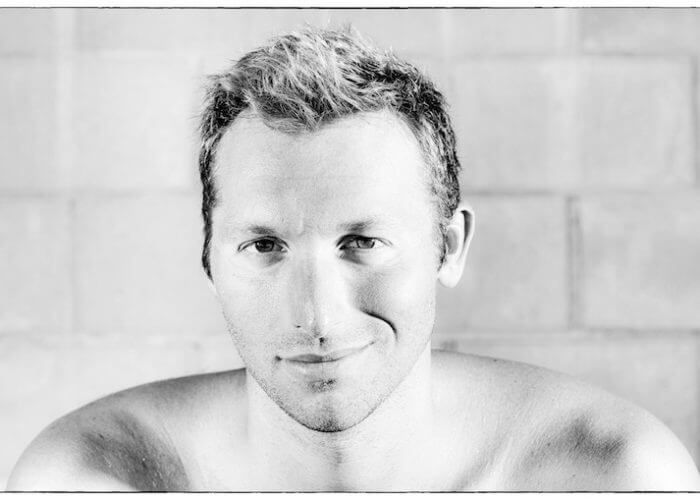
Ian Thorpe – Photo Courtesy: Patrick B. Kraemer ©
At his best, he was at one with the water, he rolled, caught the wave, mastered dynamic lift and the art of creating helpful eddies, vortices and wheels in the wave he surfed; Thorpe spoke of the different textures and weights of water. He was in his element, a propulsive, uninterrupted ‘effortless’ force and flow of pull, kick, ride.
He was aquatic aestheticism in magnificent motion. His swimming, his swimming skill explained the speed that withstood all challenges, barring one on the clock. Thorpe has been a magnet to world-class swimming excellence and pioneering pace since he became Australian Swimmer Number 494.
Paul Biedermann‘s 3:40.07 was established for gold in shiny suit at the Rome 2009 World Championships. The German swimmer’s effort was one of 43 global standards set in eight days. Take away the suits and we come to the 3:40.14 of Sun Yang at London 2012 as the closest challenge to Thorpe at his best, a challenge that feels more remote than 0.06sec given the two doping offences the Chinese man suspended for eight years this past February 28, has been handed by the World Anti-Doping Agency (WADA).
No other man has ever been inside 3:41, no other man in textile, with or without a clean record, has been inside 3:41.5. Fellow Australian Mack Horton, with his 3:41.55 Olympic victory over Sun at Rio 2016, is the nearest to Thorpe in the ranks of those racing in textile with a clean record. On that same measure, Thorpe has the fastest 6 swims over 400m free all-time whether you count shiny suits or not.
All water under the bridge but while the suits left many questions hanging in the air, it is all but certain that had the shiny suits not come along, Ian Thorpe would to this day hold the World 400m freestyle record in 3:40.08.
There ends the part about Thorpe’s 400m might and the start of three days of world-record breaking 20 years ago this day. For those who wish to read on, here’s what non-textile suits meant for the thread of 400m history:
How Shiny Suits Shredded The Thread Of Record History
When Thorpe’s 3:40.08 fell – yet didn’t and still hasn’t – the 400m picture was so transformed that Kieren Perkins, still 4th all-time fastest going into Rome 2009, was no longer among the 10 fastest.
To Biedermann’s credit, the German said that he would not have got “within 2sec of Thorpe’s world record” without help from his arena X-Glide. “The swimsuit helped me a lot,” said the 23-year-old German, who, psychologically mauled by the suits issue in a year in which he had no access to the LZR, finished 18th in Beijing in 3:47.69. What a difference a suit made. Biedermann said:
“It was just an amazing feeling, I couldn’t describe it. It’s a thing that you only live through one time in your life. I didn’t expect it at all, I thought it would be faster than the semi-final but it was a really great race and that pushed me to get fast times.”
He paid tribute to Thorpe, saying:
“He’s a living and swimming legend, one of my swimming idols. I watched him at home on TV and never expected to swim that fast or beat his world record. But even if I did beat one of his world records, he is still a legend.”
Look to the last 100m and see the suit in full flow, Biedermann 1.27sec faster than the Australian in the last 100m of Thorpe at his dizzying height.
The 400m splits compared:
- Thorpe: 53.02; 1:49.57; 2:45.43; 3:13.04; 3:40.08 – 2002
- Biedermann: 54.42; 1:51.02; 2:47.17; 3:14.30; 3:40.07 – 2009
That homecoming split tells us much about the suits: the German, coached by Frank Embacher in Halle, birthplace of Kornelia Ender, was
Here is how the Rome race fits into “swimming” history:
A little context: Russian Evgeni Sadovyi, with his winning 3:45.00 World record at the Barcelona Games in 1992 had spent 15 years sliding down the ranks slowly. In mid-2007, the Russian’s time was still 35th all-time performances on a list that included 16 efforts by Thorpe. Coming out of Rome 2009? 77th.
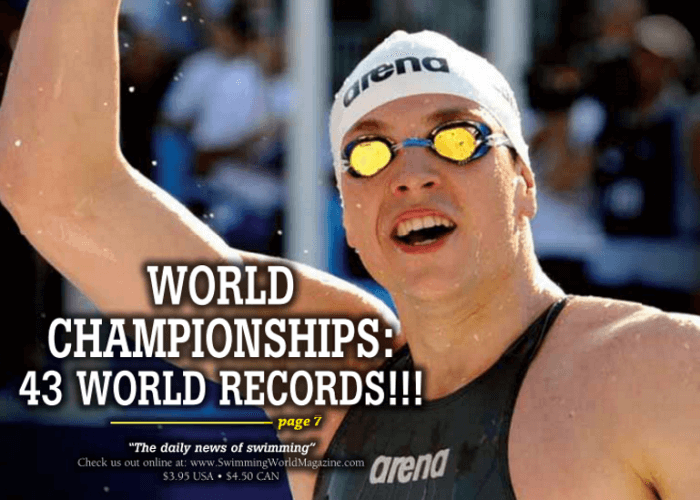
Paul Biedermann on the cover, with his shiny suit – Photo Courtesy: Swimming World Magazine
Rome 2009 final
- Podium: 3:40.07-3:41.35
- Final: 3:40.07-3:47.02
- Inside 3:41: 1
- Inside 3:42: 3
- Inside 3:45: 5
- Inside 3:47: 7
Melbourne 2007 final:
- Podium: 3:44.30-3:45.43
- Final: 3:44.30-3:48.49
- Inside 3:41: 0
- Inside 3:42: 0
- Inside 3:45: 1
- Inside 3:47: 5
The all-time top 10 coming out of Rome 2009:
- 3:40.07 Biedermann GER
- 3:40.08 Thorpe AUS
- 3:41.11 Mellouli TUN
- 3:41.35 Zhang CHN
- 3:41.86 Park KOR
- 3:42.51 Hackett AUS
- 3:42.78 Jensen USA
- 3:43.11 Vanderkaay USA
- 3:43.40 Rosolino ITA
- 3:43.45 Lobintsev RUS
And coming out of Melbourne 2007:
- 3:40.08 Thorpe AUS
- 3:42.51 Hackett AUS
- 3:43.40 Rosolino ITA
- 3:43.80 Perkins AUS
- 3:44.11 Keller USA
- 3:44.30 Park KOR
- 3:44.44 Prilukov RUS
- 3:45.00 Sadovyi RUS
- 3:45.11 Brembilla ITA
- 3:45.82 Vanderkaay USA
The End of Thorpe and Hackett Era?
Grant Hackett penned a column for a TV networks website heading into Rome. This is what he wrote:
“The one thing you can be sure of at the world swimming championships in Rome is that more world records will be broken. Sadly, plenty of them,” Hackett wrote on an Australian TV website that he works for. “It’s no secret that swimmers are moving faster thanks to the new high-tech suits they’re wearing and given FINA’s dubious decision to allow them in competition, manufacturers have embarked on a mini arms race.
“In long-course swimming, there are now just four world records across all strokes and distances that haven’t been broken with the aid of the new technology.
“Two (800m and 1500m freestyle) are mine, one is Ian Thorpe’s (400m freestyle) and the other belongs to Dutch sensation Inge de Bruijn (100m butterfly).
“Don’t be surprised if all four fall in Rome. The question will be who, or what, deserves the recognition: swimmer or swimsuit? In times past when someone broke a record, everyone stood up around the world and applauded. These days, no-one blinks an eyelid and it really is soul destroying for the sport.”
How To Piece Together The Threads Of History When Swimming Speed Has Been Skewed
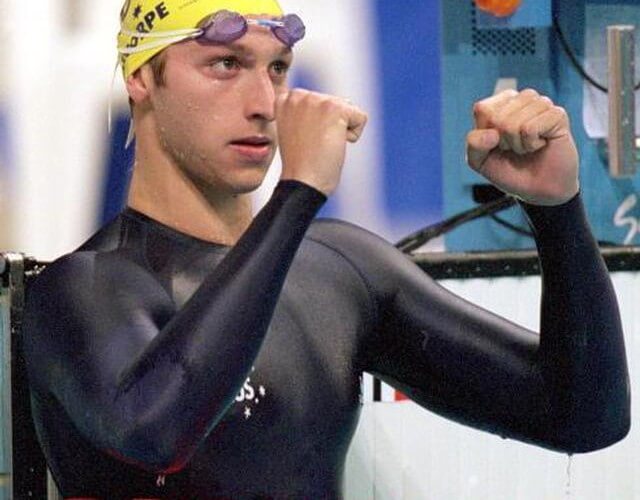
Ian Thorpe – Photo Courtesy: Adidas
Go back to the cusp of shiny suits and we find an excellent December 2007 research paper and findings by A. M. Nevill, G. P. Whyte, R. L. Holder and Mike Peyrebrune.
The purpose of their work was to determine whether swimming world records had started to plateau – and if so, where could we expect swimming’s limits to be. The conclusion was: yes, world records in swimming had indeed started to plateau.
“The results confirm that men and women’s front-crawl swimming world-record speeds are plateauing and the ratio between women’s and men’s world records has remained stable … In conclusion, the logistic curves provide evidence that swimming world-record speeds experienced a period of ‘accelerated’ growth/improvements during the 1960-70s but are now beginning to plateau. The period of acceleration corresponded with numerous advances in science and technology [inc., goggles, wave-breaker lanes, etc.] but also coincided with the anecdotal evidence of institutionalised doping.”
At the times, the researchers were unaware that shiny suits made of non-textile materials and approved by FINA were about to put the clock on fast-forward and alter the course and thread of swimming history.
The ensuing debate divided the world swimming community for a while, before an overwhelming vote in favour of banning the suits. It is worth catching up on that 2007 paper by A. M. Nevill, G. P. Whyte, R. L. Holder and Mike Peyrebrune for any who ponder yet where those curves got to in 2008-09 and what they would look like today.
How shiny suits impacted distance freestyle

Ian Thorpe and Grant Hackett led swimming into a new era of speed in distance freestyle – by Patrick B. Kraemer
When discussing how far distance freestyle got to in the 20 years covering the impact of pioneers Thorpe, Hackett and Perkins, best view the Australian efforts from 1992 to 2005 as timewarp masterclasses. There are lots of claims to the title ‘golden era’ when it comes to assessing particular strengths of individuals, nations and programs down the years.
By Rio 2016, Thorpe still accounted for 6/10 and 9/20 of the swiftest 400m swims ever discounting shiny suits and is all-time No 3 over 800m, too, as a world champion who pipped his teammate in 2001 when Hackett was on high.
In 2016, two of the three world records in distance freestyle remained in the grip of shiny suits. The 1500m records was a rare and vintage coin: it never belonged to shiny suits, Hackett’s 2001 standard replaced by the best of Sun Yang in 2011, three years out from a positive doping test.
In general, distance freestyle was seen as a realm where suits didn’t help that much. There are certainly arguments for that being the case with some individuals but there can be no doubt that in general, the impact was truly significant. The 400m freestyle is where we find one of the greatest causes of lament among observers of swimming speed: Ian Thorpe, 3:40.08, replaced by 0.01sec at the hand of Paul Biedermann.
The shiny suits, like global politics of 2016, created schism in the community. For the USA in Rome, it was time the suits went, for at least some in Germany and elsewhere, that was only because the USA was now being beaten but it hadn’t stopped it celebrating astonishing swims at Beijing 2008 that most certainly came down to shiny suits, too.
 FINA was responsible for it all but no-one ever took the wrap.
FINA was responsible for it all but no-one ever took the wrap.
That was left for swimmers to mop up, from the like of Hackett and Thorpe through to the folk who queued in a boiling tunnel in Rome at a world championships to borrow a suit at the bizarre bazaar of kit makers, some of them wholly new to the sport. FINA director Cornel Marculescu described it as a great opportunity to “create a market” like “tennis and golf”.
Actually, it was the near-death of swimming for a short while.
Meanwhile, in the ranks of elite 400-1500m swimmers, there was a different picture than that found in sprint freestyle.
Two cycles after Beijing 2008, with 2009 counted in the measure, here was the shiny suits wave that washed over even the might of Ian Thorpe:
No of shiny times in the all-time top 10, top 25 by the end of 2008, 2009, 2012 and 2016, all-time rankings at the end of the year noted
Men – Distance Freestyle
| Event | WR | WTB | Top 10 | Top 25 | ||||||||||||||||
| Free | 2016 | 2012 | 2009 | 2008 | 2016 | 2012 | 2009 | 2008 | ||||||||||||
| 400m | 3:40.07 | 3:40.08 | 5/10 | 5/10 | 7/10 | 6/10 | 9/25 | 13/25 | 17/25 | 13/25 | ||||||||||
| 800m | 7:32.12 | 7:38.57 | 3/10 | 4/10 | 6/10 | 3/10 | 5/25 | 10/25 | 15/25 | 8/25 | ||||||||||
| 1500m | 14:31.02 | 14:31.02 | 2/10 | 4/10 | 5/10 | 5/10 | 6/25 | 9/25 | 12/25 | 11/25 |




looked effortless at an Olympic level.
Excelente información para el recuerdo, pasarán décadas y esto permanecerá en nuestras memorias!
The best ….
Great article and great race video!
Awesome athlete!
Dear Craig, you are the one of the best writers of swimming in the World, but please let go of your obsseion with the shiny suits. Ian Thorpe is a legend in the pool. There was no need to go on another rampage against the shiny suits. Please just let them be.
Johan 🙂 … thanks for your comment – they are a part of the thread of history and in the context of Thorpe (and many others) they are relevant. This was an archive piece with context attached, including noting that Thorpe remains the best 400 freestyle swimmer we’ve ever seen. It was worth noting why and how that fits in context and fact. ‘Let them be’; ‘let it be’, ‘let it go’ etc may well be fine in the round. In recording history and context, it isn’t that simple, be that GDR, doping, suits, abuse or any of the others elements that also form a part of the ‘how’, ‘why’, ‘when’ and what do we learn from it all, both for the record and as contributions to the betterment of swimming and sport. There’s a whole generation of swimmers now 15 to 25 years old, for example, who have no feel for the context of their sport’s history and coaches and others who even now, for the sake of convenience, shrug and say ‘well, everyone had one, so what’s the …’ etc. From time to time, there are moments to remind people that there are answers to questions such as ‘So if Ian Thorpe is not the world-record holder how can he be the best 400m freestyler we’ve ever known?”. I’m sure you can stomach ending your read at the bit you want to read and editing out what you know and don’t want to be reminded of should that be your choice 🙂 Go well.
I was privilege to witness most of Ian’s outstanding performances from the Pan pacs on as part of a sport presentation team…amazing athlete and quality individual